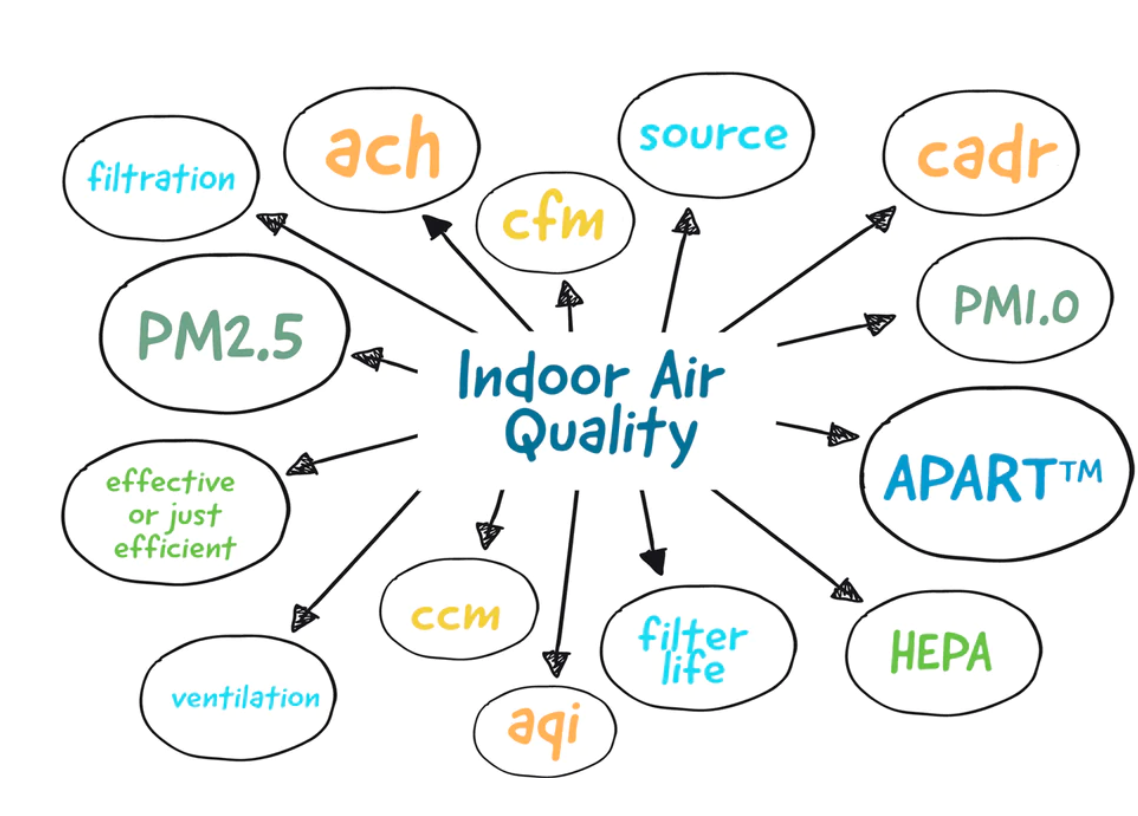In early 2015, the American Society of Heating, Refrigerating and Air-Conditioning Engineers (ASHRAE) released a Position Paper on Filters and Air Cleaning Technologies. Relevant committees searched current data, evidence, and literature, including ASHRAE’s own publications, on the effectiveness of eight technologies including mechanical media filtration, electric filters, adsorption, ultraviolet light, photocatalytic oxidation, air cleaners, ozone, and ventilation. Indoor occupant health effects, long-term effects, and limitations are reviewed comprehensively.
The position paper has two distinct points:
1. In view of the adverse effects of ozone and its reaction products on human health, ozone should not be used for air purification in indoor environments. Even if ozone is not used for purification, if the purification device can generate a large amount of ozone during operation, a high degree of vigilance must be given.
2. All filtration and air purification technologies should provide data on the removal of pollutants based on current test methods, and if there is no relevant method, there should be evaluation by a third-party agency.

The document introduces each of the eight technologies.
- Mechanical filtration or porous media filtration (Mechanical filtration or Porousmedia particle filtration) has a very obvious filtering effect on particulate matter and is beneficial to human health.
- Evidence shows that due to the relationship with multiple state parameters, the removal effect of electronic filters on particulate matter in the air presents a relatively large range: from relatively ineffective to very effective. Moreover, its long-term effect is related to the state of maintenance of the device. Since electrofilters work on the principle of ionization, there is a risk of ozone generation.
- Sorbent has an obvious removal effect on gaseous pollutants. Studies have shown that people’s sense of smell has a positive evaluation on its removal effect. However, there is still insufficient direct evidence whether it is beneficial to health. However, physical adsorbents are not equally effective on all pollutants. It has a greater effect on non-polar organic matter, high boiling point, and large molecular weight gaseous pollutants. For low concentrations of substances with a molecular weight below 50 and high polarity, such as formaldehyde, methane and ethanol, it is not easy to adsorb. If the adsorbent first adsorbs pollutants with low molecular weight, polarity and low boiling point, when it encounters non-polar organic matter, high boiling point, and gaseous pollutants with large molecular weight, it will release (desorb) part of the previously adsorbed pollutants , that is, there is adsorption competition. Furthermore, even though physisorbents are regenerable, the economics are worth considering.
- Some studies have shown that photocatalytic oxidation is effective in decomposing organic matter and microorganisms, however, there is also evidence that it has no effect. Photocatalyst uses ultraviolet rays to irradiate the surface of the catalyst to promote the decomposition of harmful substances on it into carbon dioxide and water, but its effect is related to the contact time, air volume, and the surface condition of the catalyst. If the reaction is not complete, other harmful substances such as ozone and formaldehyde may also be produced.
- Research shows that ultraviolet light (UV-C) can be effective in inhibiting the activity of pollutants or killing them, but be wary of possible ozone.
- Ozone (Ozone) is harmful to human health. The allowable exposure concentration limit proposed by the ASHRAE Environmental Health Committee in 2011 is 10ppb (one part per 100,000,000). However, there is currently no consensus on the limit value, so according to the precautionary principle, purification technologies that do not generate ozone should be used as much as possible.
- Air purifier (Packaged air cleaner) is a product using single or multiple air purification technologies.
- Ventilation is an effective way to remove indoor pollutants when the outdoor air quality is good. Use of filtration and other air cleaning technologies can reduce the need for ventilation.When the outdoor air is polluted, doors and windows must be closed
When the outdoor air quality is good, ventilation is undoubtedly the best choice. However, if the outdoor air is polluted, opening windows for ventilation will blow outdoor pollutants into the room, aggravating the deterioration of indoor environmental pollution. Therefore, doors and windows should be closed at this time, and high-circulation air purifiers should be turned on to quickly remove indoor air pollutants.
In view of the damage of ozone to human health, please be cautious about products that use high-voltage electrostatic technology to purify the air, even if such products produce inspection reports from inspection agencies. Because the products tested in this type of inspection report are all new machines, the air humidity during the test has not changed. When the product is used for a period of time, a large amount of dust gathers in the high-voltage part, and it is very easy to produce discharge phenomenon, especially in the humid environment in the south, where the air humidity is often as high as 90% or above, and high-voltage discharge phenomenon is more likely to occur. At this time, the indoor The ozone concentration is easier to exceed the standard, which directly damages the health of users.
If you have purchased a product with high-voltage electrostatic technology (air purifier, fresh air system), when you sometimes smell a faint fishy smell when you are using it, you should be careful at this time, it is best to open the window for ventilation and close it immediately product.
Post time: Jul-03-2023


